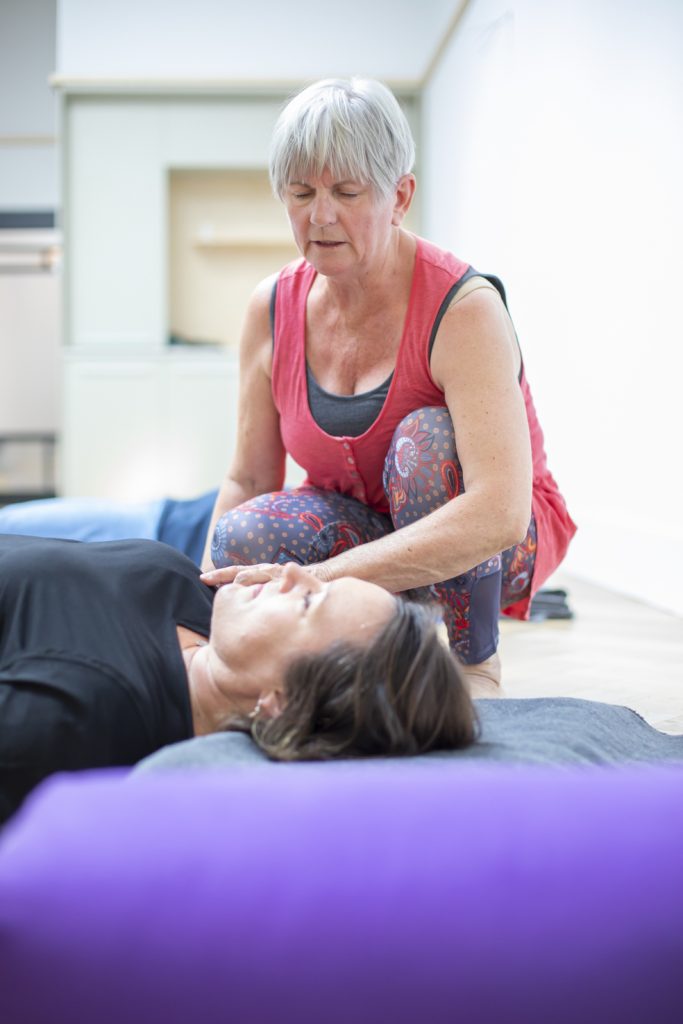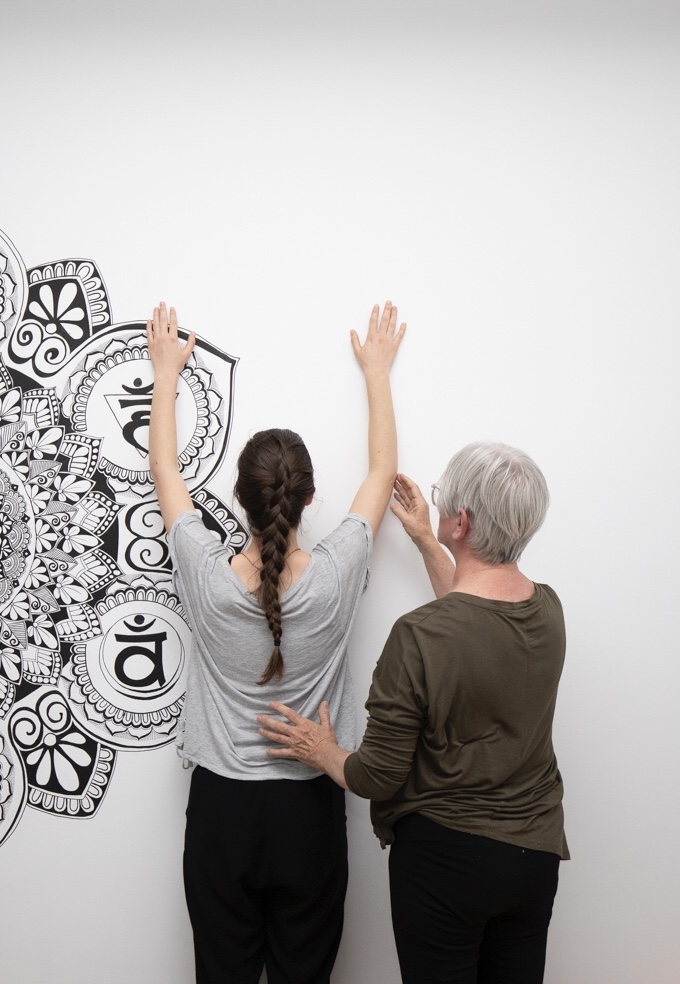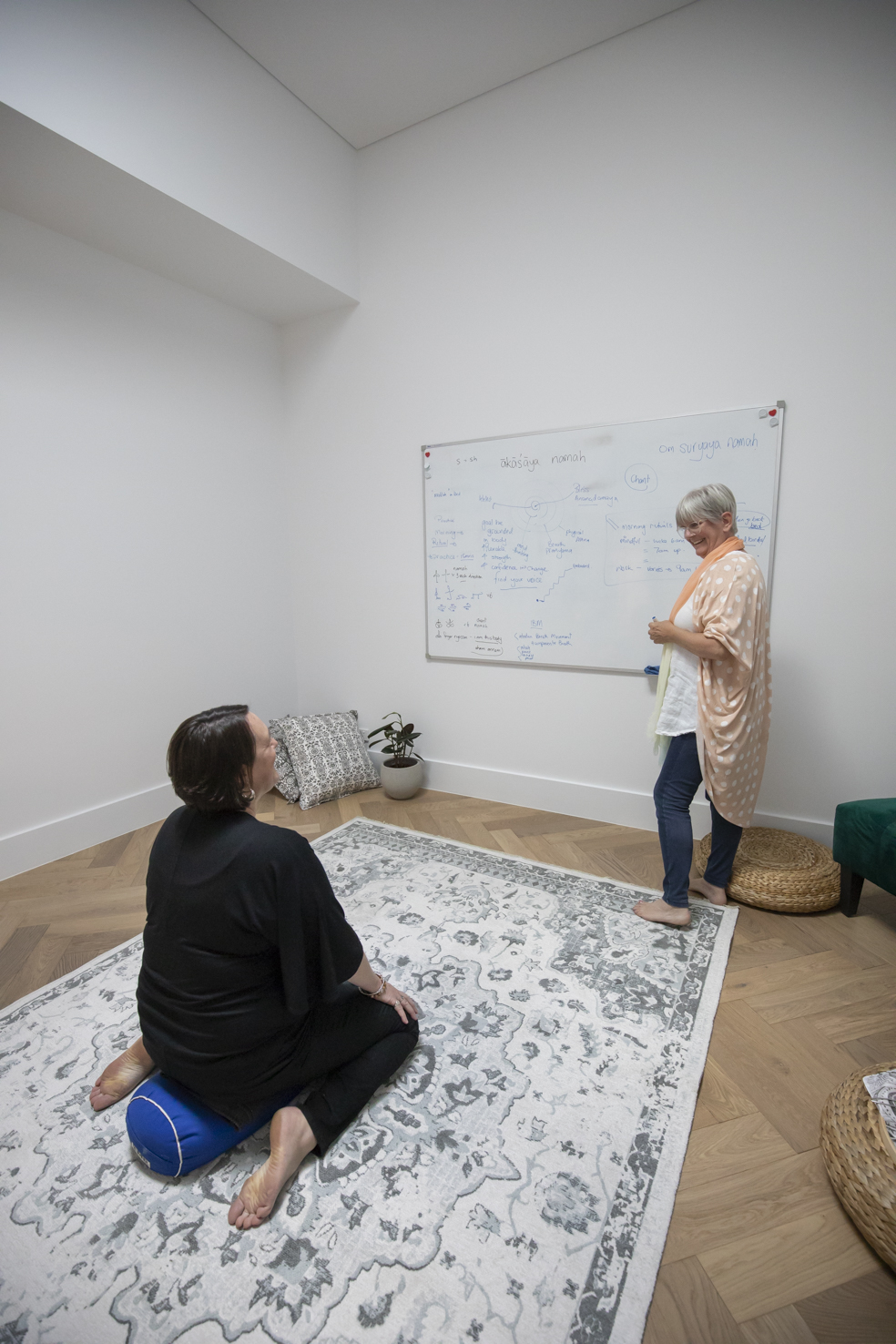if anybody can breathe they can do yoga
T Krishnamacharya
Why adelaide yoga therapy?
Linking Body, Breath & Mind

Why?
Adelaide Yoga Therapy offers a unique opportunity, through the application of Yoga as therapy, to explore a pathway to wellness in both an individual or small group setting that has the potential to facilitate positive change in the relationship we have with our health and it’s potential challenges.
In this context Yoga is less about how to place our body in a particular pose or asana and more about how a student is able to access the benefits from the many aspects that Yoga has to offer.
“The success of Yoga does not lie in the ability to perform postures but in how it positively changes the way we live our life and our relationships.” – TKV Desikachar
how?
Yoga Therapy uses the principles and tools of yoga to work in a therapeutic way towards a desired outcome for a individual.
All of us want to “feel better”.
By addressing the uniqueness of you and adapting the tools of yoga to meet your current needs we work together to develop a personalised practice that continues to evolve as your circumstances change
If you wish to be an active participant in your wellness then Adelaide Yoga Therapy can assist you.

The success of Yoga does not lie in the ability to perform postures but in how it positively changes the way we live our life and our relationships
TKV Desikachar
The Student-Teacher Relationship is an integral component of care.
“In education the first requirement is the teacher, the second is the student. What should happen between them is learning”. TKV Desikachar, Developing a Personal Practice.
The student-teacher relationship

The Teacher
“teach what is inside you. Not as it applies to you, but as it applies to the other” Tirumalai krishnamacharya
The role of the teacher is to find each student’s starting point and begin work with them from that place.
A teacher guides a student step by step according to their ability, health status, stage in life, lifestyle, their potential and in a way that progresses them towards their identified goal.
“There is something really important about relationship, openness, the grace of listening, and belief that the person is truly whole.” - Dr Brian Broom. The aim is to grow a relationship of trust with the student, one that empowers and fuels a belief that they can be their own catalyst for change. The teacher is the torch bearer of the knowledge they have received and has a responsibility to create a safe avenue to make that knowledge accessible for the needs and growth of a student.
The Yoga Sūtra-s talk of Ahimsa - non-violence, do the least possible harm. Ahimsa is an important component of teaching and as a teacher we are compelled to apply this teaching to our self and to the other.
The Student
Yoga Sūtra 1:1 atha yoga anusasanam “here Is the instruction about yoga”. Frans Moors, liberating isolation
A student works with the guidance of the teacher to step gently towards their goal of well-being. They require an ability to be open to receive and a desire to practice with a sustained effort over a period of time. Practicing in this way allows each student to gain an understanding of their potential and to cultivate a belief that change is achievable.
Within a relationship of mutual respect and understanding this facilitation of change may come in many forms, from the relief of symptoms to improved health, or it may simply be a change in the personal relationship with one’s suffering.
There may be one perceived drawback though……it takes time and sustained practice to establish effective change, so, commitment is a necessary component for a sustainable change to happen.
